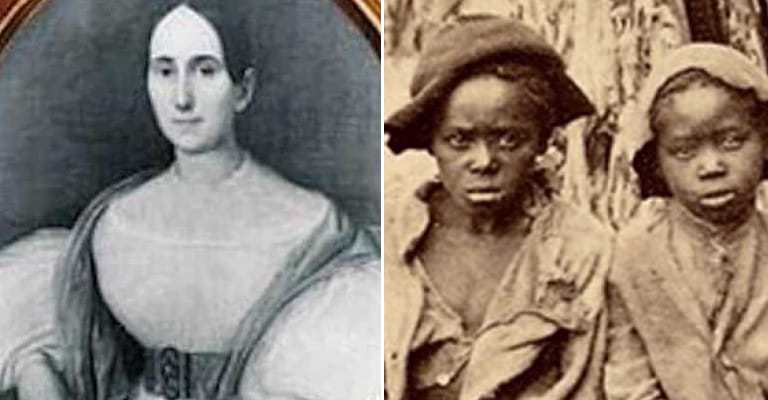The descendant of some of the first Irish-French colonists of New Orleans, Marie Delphine McCarty, otherwise remembered as Madame LaLaurie grew up to be the toast of Creole Society. Beautiful, wealthy and accomplished, the twice-times married socialite was renowned for her grace, gentility and her tasteful soirees. However, from 1828, tarnish began to appear over the glittering veneer of her life. Just after her third marriage, rumors began about a hidden aspect of the new Madame LaLaurie’s character.
In April 1834, a fire broke out at the LaLaurie residence 1140 Royal Street that shattered the illusion forever. Rescuers brought out the bodies of seven starved and tortured slaves from an attic above the kitchen. The extent of the cruelty ignited the local’s fury. A mob looted her mansion, and Delphine LaLaurie escaped from New Orleans and into legend. Today, people remember her as a monster: “The Widow Blanche” or “Demon in the shape of a Woman.” The tales of her crimes have become more lurid with the passage of time, intermingling history, and myth. Here are twelve insights into the actual history of the case.

It was Illegal to Mistreat Slaves In Louisiana
Slavery may have been legal in early nineteenth-century Louisiana. However, this did not mean that masters could do as they wished with their human property. To this end, legislation was put in place to protect slaves from overt cruelty. While masters could chastise their slaves, the law set limits on this chastisement. It was these limits that Delphine LaLaurie contravened.
The 1724 French Code Noir was one of the first laws to forbid excessive cruelty. “All our subjects in this colony whatever their condition or rank” from applying by “their own private authority the rack to their slaves, under any pretense whatever and to mutilate said slaves in any one of their limbs or in any part of their bodies under penalty of the confiscation of said slaves and said masters so offending, shall be liable to a criminal prosecution.”
The only punishment allowed by the Code was to “put their slaves in irons and to have them whipped with rods or ropes.” The Spanish Codigo Nero expanded upon this, allowing abused slaves to petition the authorities to order their sale away from excessively violent owners. When Louisiana passed into American hands in 1806, the American Black Code reiterated the sentiment of the previous two laws.
According to the Black Code, any person who: “should inflict any cruel punishment, except flogging, or striking with a whip, leather thong, switch or small stick or putting in irons, or confining such slave….shall forfeit and pay for every offense a fine not exceeding five hundred and not less than two hundred dollars.” By 1825, this law had evolved into Article 173 of the Civil Code of the State of Louisiana. However, the law not removed abused slaves from their owners; it also stipulated that no slave could act as a witness against a free person.
These then were the circumstances that defined Madame LaLaurie’s abuse. But what made her overstep the limits of the law?

